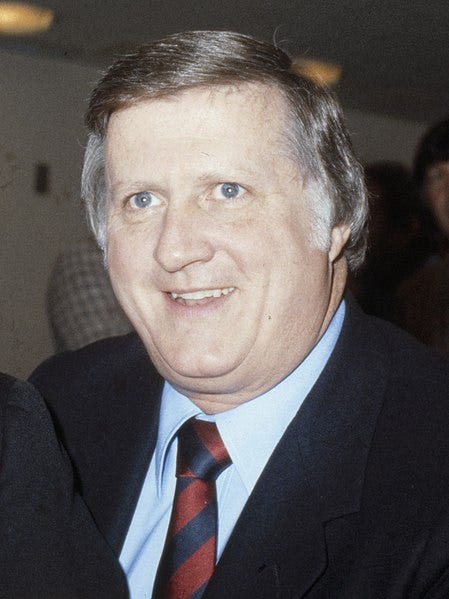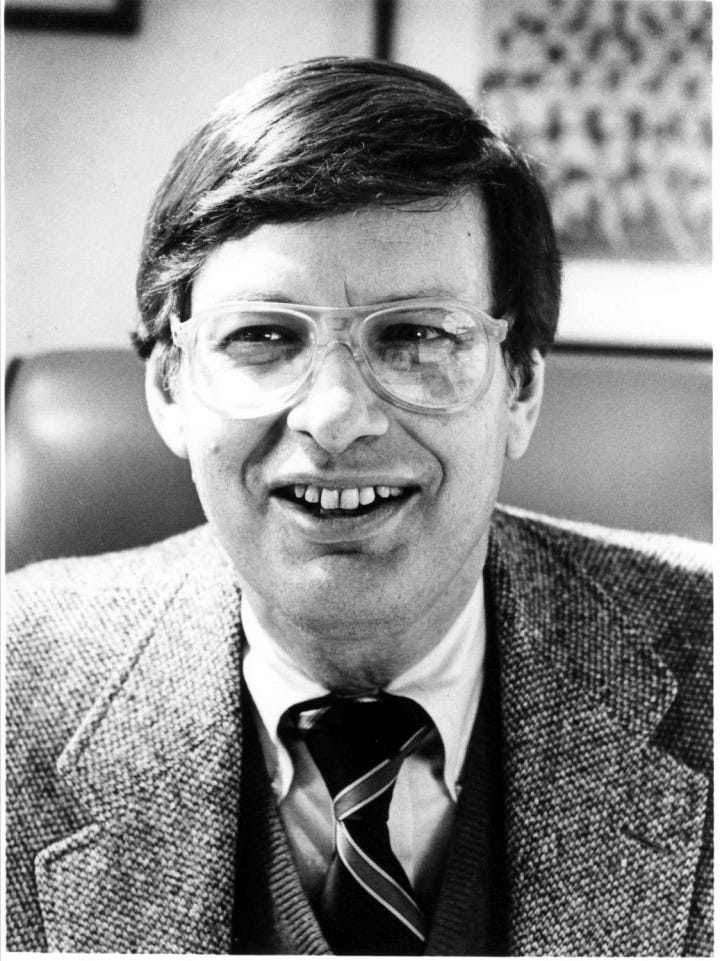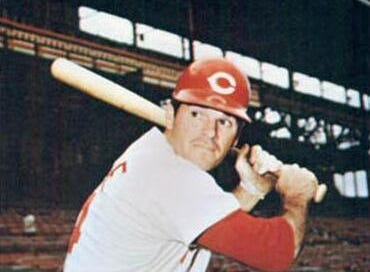Pete Rose was "Charlie Hustle" in every sense of the phrase.
Despite unquestioned achievement on the field, the debate on his legacy swirls like the dust he kicked up on a headfirst slide into second.
Pete’s one of the most debated individuals on social media, at least on the baseball sites I follow. All you have to do is say his name and it starts a fight. It’s like dropping a puck between two of pro hockey’s tough guy “enforcers” from my youth, Terrible Teddy Green and Stan Mikita.
Rose’s passing Monday at age 83 simply regenerated the debate.
For what it’s worth, here’s my take on Rose, as one lifetime baseball fan and a child of the generation when he was a baseball superstar. And let me preface it by saying, in retrospect, it sounds like he was kind of a jerk as a person and that’s putting it mildly. But baseball was never 100 percent full of choirboys or Christy Mathewsons. Wish it were so.
First, NOBODY got more out of their God-given talents in the history of big-league baseball that Peter Edward Rose. NOBODY. He was the archetypal over achiever. According to ESPN, a 1965 Cincinnati Reds scouting report said he “can’t hit, run throw or field. All he can do is hustle.”
That’s why he was the idol of a lot of kids I knew who grew up playing ball in the '70s, just like Mickey Mantle and Willie Mays were for us kids in the '50s and '60s. Some young boys even wore their hair like him, emulating what one writer called that Prince Valiant mane (I called it “salad bowl head”), and wore plastic batting helmets like him. He played at a hard-charging, full-throttle pace all the time. The message to kids was, if you work and play as hard as Pete Rose in baseball or anything else, you can make it too.
Heck, on a softball team I played on as a young adult, our best player idolized Rose so much that he even spiked the ball on the ground after the final out of an inning, as Pete did when he played first base for the Philadelphia Phillies. Only problem was, one time, when we were playing the first-place team for the league lead, my teammate spiked the ball in the outfield when there were only two outs and runners on base. We lost.
Rose was a Rookie of the Year, a league Most Valuable player, a two-time Gold Glove fielder, a three-time batting champion and helped his teams to six league championships and won three World Series. And he amassed 4,256 career hits — more than anyone. He also led the National League or the majors in hits seven times and was a league All-Star 18 of his 24 years in the majors. He was the pilot light of the 1970s Cincinnati Reds, known as “The Big Red Machine,” one of the best teams of all time.
And he loved to hit. A premier baseball writer, I think it was either George Vecsey or Dave Anderson both of The New York Times, once wrote, “For Pete Rose, batting practice is feeding time.” Rose was described as holding his bat after such a session as a marksman might hold a smoking rifle after target practice
All that said. Pete did himself in when he bet on baseball. He knew the rules. He broke them. Moreover, he thought he was bigger than the game. He wasn't.
I would also suggest that Pete got more "fame" out of NOT being in the National Baseball Hall of Fame in Cooperstown, N.Y. than he ever would have if he were inducted on the first ballot. The endless debate over him is evidence of that.
He’s apologized. In fact, if you go to PeteRose.com, you can buy an official autographed Pete Rose “Sorry I Bet On Baseball” baseball for $174.99. You can even get one autographed by Rose and current Major League Baseball Commissioner Rob Manfred for $299.99
For a guy who once said, “I’d walk through Hell in a gasoline suit to play baseball,” to do what he did was either incredibly stupid, or brazen, or both. And he agreed to the ban — which, by just about any account I’ve read, is going to stick, beyond his passing.
Then- Baseball Commissioner A. Bartlett Giamatti upheld the integrity of the game by standing up to a legend like Rose and it probably hastened the heart attack which cost Mr. Giamatti his life in 1989, just days after he announced Rose’s ban.
BUT... Since then, there seems to be a double standard between disciplinary actions for baseball players and baseball executives.
New York Yankees principal owner George M. Steinbrenner III's 1990 "permanent" ban from involvement in day-to-day baseball operations was commuted to time served in 1993 by then-acting commissioner Bud Selig, a Milwaukee car dealer and owner of the Milwaukee Brewers.


Mr. Steinbrenner had conspired with a known gambler and mob snitch to defame one of his own stars, Dave Winfield -- and paid that snitch $40,000 in hush money to boot.
As a lifetime Yankee fan, I know that no executive loved his team more than The Boss - though I also know his greatest teams were built by his general managers when he was under suspension or ban. (In addition to his ban in the ‘90s, Steinbrenner also was suspended three years in the 1970s for an illegal campaign contribution to President Nixon.)
No owner gave players and managers more second chances than George Steinbrenner. He gave manager Billy Martin a bunch, hiring and firing him five times. Also, I will always give Mr. Steinbrenner credit for bringing the shamefully unappreciated Roger Maris back to Yankee Stadium for accolades years after retirement.
But if George III ever gets within a whiff of Cooperstown, that opens the gates for consideration of Pete Rose, Shoeless Joe Jackson and others.
And a footnote: Now-retired Commissioner Selig, in addition to commuting Mr. Steinbrenner’s “permanent” ban, also presided over The Steroid Era of chemically enhanced physiques and home run statistics — which, coincidentally, ginned up attendance, interest and revenue after a debilitating strike that wiped out the 1994 season.
Athletes who bulked up with a little anabolic help during that era are reviled as “juicers” and cheaters. While Selig commissioned a study and instituted reforms, a U.S. congressman called for his resignation for his “glacial” response to the controversy.
Yet, Mr. Selig, Major League Baseball’s CEO of the Steroid Era, is in the Hall of Fame for boosting baseball’s bottom line. Pete Rose, big-league baseball’s all-time Hit King and an undeniable part of the lore of the game, isn’t.
Is that just?
There sure seems to be a different standard if you wore a suit instead of spikes and stirrups.
Pat Kinney is a freelance writer and former longtime news staffer with the Waterloo-Cedar Falls Courier and, prior to that, several years at the Ames Tribune. He is currently an oral historian with the Grout Museum District in Waterloo. His “View from the Cedar Valley” column is part of “Iowa Writers Collaborative,” a collection of news and opinion writers from around the state who previously and currently work with a host of Iowa newspapers, news organizations and other publications. They are listed below. Clink on the links to check them out, subscribe for free - and, if you believe in the value of quality journalism, support this column and/or any of theirs with a paid subscription .
The Iowa Writers’ Collaborative
From our founder, Julie Gammack:
“We do not accept advertising. We are linking readers directly to Iowa writers. Our columnists are most appreciative to those of you who have the ability to become a paid subscriber of their work.”
Laura Belin: Iowa Politics with Laura Belin, Windsor Heights
Doug Burns: The Iowa Mercury, Carroll
Dave Busiek: Dave Busiek on Media, Des Moines
Iowa Writers’ Collaborative, Roundup
Steph Copley: It Was Never a Dress, Johnston
Art Cullen: Art Cullen’s Notebook, Storm Lake
Suzanna de Baca: Dispatches from the Heartland, Huxley
Debra Engle: A Whole New World, Madison County
Julie Gammack: Julie Gammack’s Iowa Potluck, Des Moines and Okoboji
Joe Geha: Fern and Joe, Ames
Jody Gifford: Benign Inspiration, West Des Moines
Rob Gray: Rob Gray’s Area, Ankeny
Nik Heftman: The Seven Times, Los Angeles and Iowa
Beth Hoffman: In the Dirt, Lovilla
Dana James: New Black Iowa, Des Moines
Pat Kinney: View from the Cedar Valley, Waterloo
Fern Kupfer: Fern and Joe, Ames
Robert Leonard: Deep Midwest: Politics and Culture, Bussey
Letters from Iowans, Iowa
Tar Macias: Hola Iowa, Iowa
Alison McGaughey, The Inquisitive Quad Citizen, Quad Cities
Kurt Meyer: Showing Up, St. Ansgar
Wini Moranville: Wini’s Food Stories, Des Moines
Jeff Morrison: Between Two Rivers, Cedar Rapids
Kyle Munson: Kyle Munson’s Main Street, Des Moines
Jane Nguyen: The Asian Iowan, West Des Moines
John Naughton: My Life, in Color, Des Moines
Chuck Offenburger: Iowa Boy Chuck Offenburger, Jefferson and Des Moines
Barry Piatt: Piatt on Politics Behind the Curtain, Washington, D.C.
Dave Price: Dave Price’s Perspective, Des Moines
Macey Spensley: The Midwest Creative, Iowa
Larry Stone: Listening to the Land, Elkader
Mary Swander: Mary Swander’s Buggy Land, Kalona
Mary Swander: Mary Swander’s Emerging Voices, Kalona
Cheryl Tevis: Unfinished Business, Boone County
Ed Tibbetts: Along the Mississippi, Davenport
Teresa Zilk: Talking Good, Des Moines
The Iowa Writers Collaborative is also proud to ally with Iowa Capital Dispatch.






Kind of a jerk? Two words. Ray. Fosse.
From tax policy to baseball, there too often is a societal bias that skews toward leniency for the affluent and harsher treatment for the less wealthy, perpetuating economic inequality and social stratification.
Pat, And good seeing you again